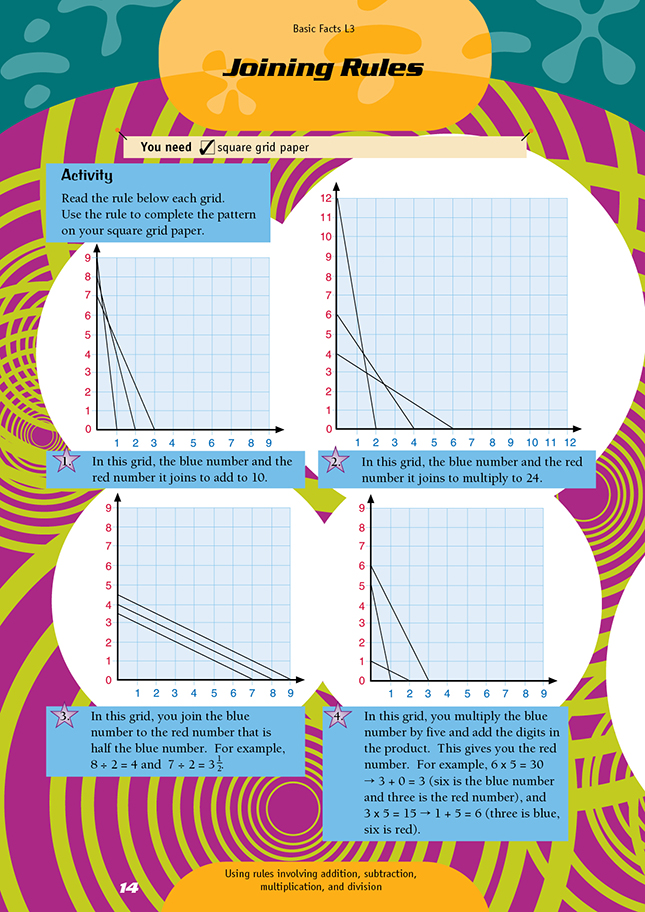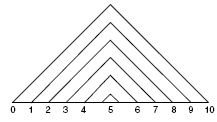This is a level 3 number activity from the Figure It Out series. It relates to Stage 6 of the Number Framework.
Click on the image to enlarge it. Click again to close. Download PDF (86 KB)
apply basic facts to a graphing activity
FIO, Level 3, Basic Facts, Joining Rules, page 14
square grid paper
In this activity, students generate interesting geometric designs from number patterns. They begin with the number on the horizontal axis (x-axis) and connect it to the value on the vertical axis (y-axis). This is the conventional order for graphing algebraic equations.
In question 1, the sums for 10 create a symmetrical curve. A visual device, the tens triangle, can also help students to learn the number combinations that add to 10.
The curve in question 2 is generated from factors of 24. This curve is also symmetrical, so drawing the curve may help students find any missing factors.
Students will find that joining the numbers in question 3 creates a series of parallel lines. Ask students why they think the lines are parallel.
These patterns could also be made by using nails and coloured string on a board.


